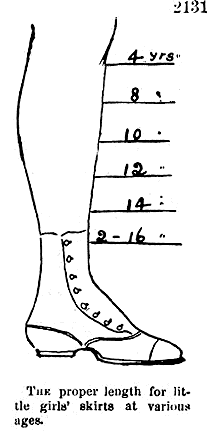selling women short: the censorship of female bodies
Five-centimetres. Floor. Fingertip length. Another day, another arbitrary distinction between proper and improper attire for women.
The ejection of Virginia teen, Clare, 17, from her homecoming prom dance last month clearly demonstrates that somehow the message is just not getting through that women are not to blame for the way men react to their bodies. Throughout time, cultural norms have been inscribed upon female bodies with the impetus on women to adhere accordingly to standards of morality. The common theme being a woman’s body is inherently sexual, and that such sexuality is dangerous to society and must be regulated and controlled.
In this case, the “eugh” factor is extreme, for the only dress code rule was that dresses must be at least fingertip length down the thigh, which means micro-shorts were a-go, students! Gosh I would have loved to see that situation arise. Lads and lasses in cut-offs all over the dance floor. Alas the theme was “Twilight in Paris” and I just don’t remember that particular mode of “baguette” transportation ever becoming popular in France.
Clare, the young woman at the centre of the incident, wore a silver dress that adhered to the dress code and was approved by a teacher on her way in. But the male chaperones – a group of fathers self-appointed to protect the precious young male students from the terrifying clutches of scantily clad women – thought otherwise. After very close scrutiny and careful consideration (Clare noticed the fathers on the balcony ogling her and talking amongst themselves while she was dancing), the chaperones rose united and sent a teacher after Clare to evict her from the formal for inciting impure thoughts among the male students in attendance.
Clare ignited a wave of media coverage after she wrote a passionate blog post describing her feelings of violation and ostracisation for being singled out and punished for daring to expose her legs. For essentially being told not only was she was sexualising herself, but that this sexualisation was damaging to other students. The inscription of sexuality on her seventeen year old body by these men, and their disturbing claim that it was inciting indecent thoughts, not only reduces Clare to an object of desire but shames her for being so. An incredibly destructive chain of thought to put to any person – let alone a young person by the elder figures in charge of raising our next generation.
As Clare rightly puts it:
‘I’m not responsible for some perverted 45 year old dad lusting after me because I have a sparkly dress on and a big a– for a teenager. And if you think I am, then maybe you’re part of the problem.’
This is where I throw down the awesome lady card and shout, ‘WHOOMP, THERE IT IS.’
No matter what they are wearing, women are not responsible for the way men react to their body. It is misogyny not morality that causes some to feel entitled to a woman’s body; to inscribe arbitrary and imagined standards upon it, and respond accordingly.
And that’s that.
The notion that an idea or image might be dangerous to society and ought to be hidden or removed underpins censorship, leading me to posit that what we have here is a case of body censorship. Censorship is an inherently fluid concept. Informed by historical and socio-political factors, its implementation is easily recognised as having shifted over time. But there seems to be a struggle to recognise its continued ability to adapt. To recognise the current societal factors at play that inform community standards. Morality has not reached an endpoint. It is not fixed. We smile when we consider how books such as Ulysses or Lady Chatterley’s Lover were once censored due to their “dangerous” sexual content and then later permitted as cultures developed. We smile as we note the archaic impractical dress codes enforced in 18th and 19th centuries, the terror of an exposed limb causing the collapse of society. Yet we struggle to understand how the same shifts in cultural norms that saw hemlines rise and freedom in women’s dress continuously expand throughout the 20th century still exists today.
Perhaps instead of mandatory dress codes, skirt lengths or any other kind of legislation of a woman’s body we should have mandatory discussions about where dress codes come from and why they exist, and about the social constructs that are propriety, objectification and sexualisation. Instead of telling these young women that they need to have dresses of a certain length, we can discuss with them why we believe a dress of a certain length is necessary. If the answer is protecting young men from “impure thoughts” then the ridiculousness of these rules should serve as a fairly effective means of eliminating them from existence. We also then get to educate our young women on the difference between dressing for themselves and dressing for others. Undoubtedly sexuality is something to be celebrated, but tying your self-worth up in your appearance is an easy trap many teens fall into as they begin to deal with puberty and their burgeoning sexual impulses and desires. But I digress.
When we hand out dress codes, and especially when we hand out dress codes to women that serve to hide parts of their body deemed sexual thus dangerous, we are perpetuating a normalisation of objectifying women. We enable dangerous rape culture to exist by telling women that they are the problem for revealing parts of their body. Consider that men’s bodies are rarely deemed sexual; their stomachs, legs, shoulders or chest are not a problem for other people and men are simply seen as human beings. We must stop blaming women for being women, for having bodies. It’s time to turn the gaze back on perpetrators. If you’re sexualising young women, you are the problem, not them.



This is so ludicrous
Pingback: Opinion: Selling Women Short | The Write Page